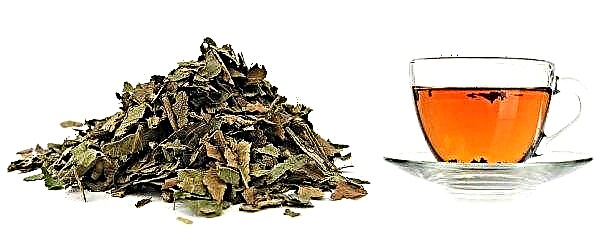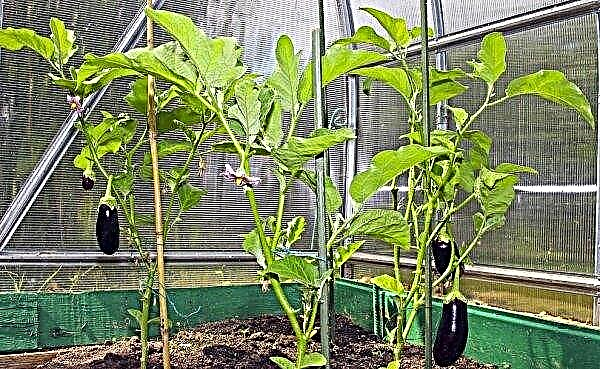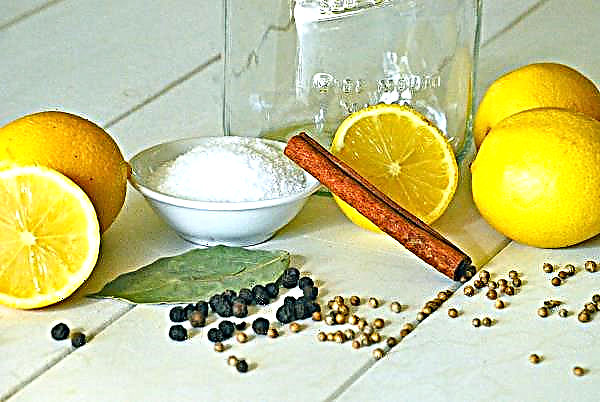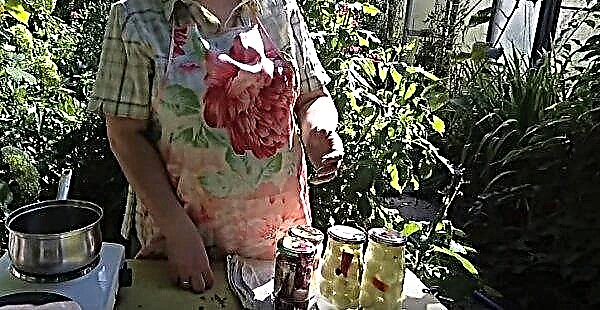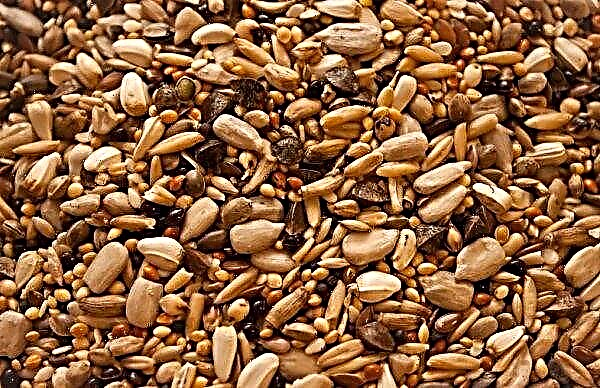Chirita is able to charm the inhabitants of the house with her magnificent, albeit small flowers and bright colors, the main thing is to organize her proper care. Read about how to do this and what else is worth knowing about a flower with such an interesting name.
Botanical description of the plant
In fact, the name "hirita" unites a whole genus of plants of the Gesneriev family, whose homeland is mostly the southeastern part of Asia. In addition, in the natural environment they can be found on the slopes of the cliffs of Sri Lanka, India, Malaysia and China.
Hirita leaf blades are usually fleecy, mottled, or green, although sometimes plants with smooth oval or lanceolate leaves are found. The size of the outlet is 5-30 cm. The flowers of plants are elegant bells of white, lilac, yellow, blue or pink, and their tubular and slightly elongated shape is the main unifying sign of all chiritis. Sometimes flowers have a contrasting pharynx, which makes the plant even more attractive. Peduncles are shown from the sinuses of leaves and instead of one often give 3-4 buds, and the fruits that appear after flowering are presented in the form of boxes, inside of which there are small seeds.
Did you know? The pioneer of hirita is the English scientist David Don, who noticed an unusual flower back in 1822. Nevertheless, new varieties of selection began to appear only in the middle of the twentieth century, which explains their limited popularity today.
Varieties
Among the variety of species variations of chirite in indoor floriculture, the following varieties are more common than others:
- Chinese Hirita (aka silver) - refers to stunted plants and usually does not exceed a height of 15 cm. It differs from the other relatives in a motley color of leaves, combining bright green and light silver colors. All of them are collected in sockets, each of which includes at least 10 fleshy oval petals. On the leaf plates and stem part, a soft and light pile is clearly visible. The peduncle is reddish, with inflorescences of violet flowers located on it (collected in 2-3 pieces). Under suitable growing conditions, flowering continues throughout the summer.
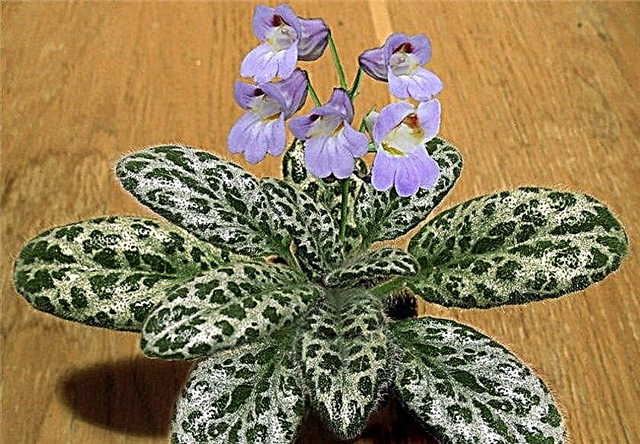
- Lavender Hirita. First of all, it differs from the previous species in its size: the plant reaches a height of 40 cm in height, and sometimes more. On high stems are large, fleshy, ovoid-shaped leaves and light green in color. In the lower part of the plant they are slightly larger than in the upper, but along the entire length of the stem are located on different sides (opposite). The flowers of the lavender variety resemble bells, as they are collected at the top of the plant and are characterized by the corresponding shape. In the color, two colors are dominant at once - mainly purple and pale purple, sometimes with white shades. The flowering of this hirita begins with the advent of summer and continues until October, when an oblong capsule (5 cm long) with completely ripened seeds is formed in place of the flowers.
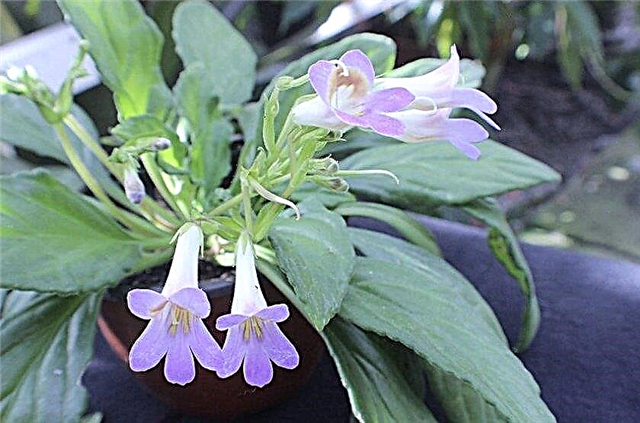
- Microbanana Chirita - an annual that grows and develops very quickly. This species has a relatively short stem and shiny core leaves covered with soft pubescence. Flowers appearing in early summer are yellow and medium in size (up to 3 cm in length), with a pharynx of dark orange color.
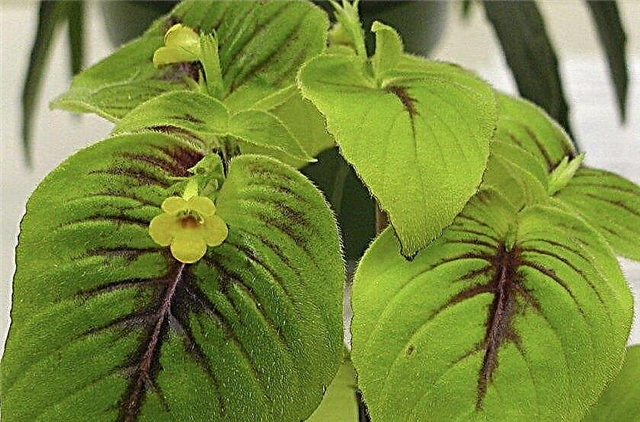
- Hirita Tamiana - rosette plant with large fleshy leaves, pubescent in the upper part of the leaf plate. Peduncles grow to a height of 20 cm and form up to 5-7 bell-shaped white flowers. A characteristic feature of this particular variety is the presence of blue marks on the neck of flowers. The flowering of hirita does not have an exact reference to the season of the year, since in this case it all depends on the level of lighting. In this regard, a pronounced period of rest may be absent.

- Double Hirita - a plant with small neatly folded oval leaves: they all sit in sockets tightly and symmetrically. The color of the leaves is saturated green, with light green veins, the surface of the leaves is velvety to the touch. The plant regularly forms daughter rosettes, due to which it acquires a multi-level look. In flower stalks no more than two snow-white flowers develop.
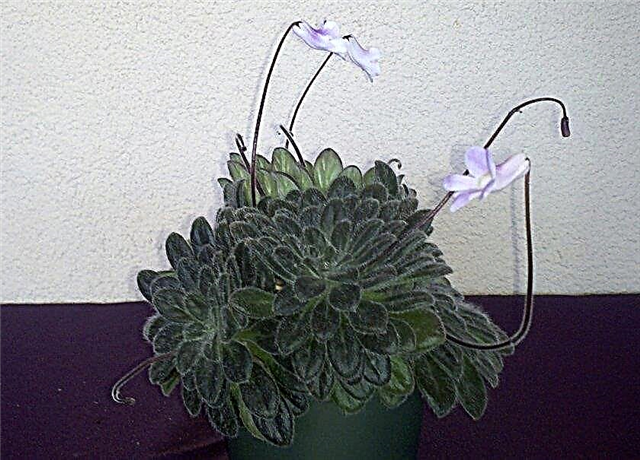
What conditions do you need to create at home
The creation of suitable conditions for the growth and development of any of the described varieties is an important step on the path to obtaining lush and abundant flowering. When choosing a place, it is important to consider several key indicators, be sure to pay attention to the level of illumination of the room, the values of temperature and humidity.
Did you know? The second name of hirita is primulin, which is sometimes translated as “brought by water”.
Seat selection
Primulas love bright lighting, but at the same time they cannot stand the effect of direct sunlighttherefore, when choosing the location of the pot, it is worth giving preference to areas near the western or eastern windows, periodically turning the plants in the direction of the light source. This will help form a symmetrical outlet and increase overall decorativeness.
In the cold season, when the daylight hours are reduced, hirita can be artificially illuminated. With good lighting for 12 hours and maintaining the temperature not lower than + 18 ° C, flowering in winter will be no less plentiful than in the summer season. Failure to comply with these requirements will lead to a dormant state of the flower.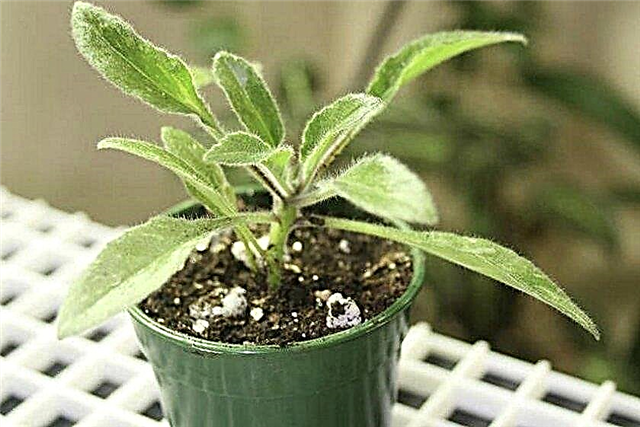
Temperature and humidity
The optimal temperature values for primula are considered to be the range + 18 ... + 24 ° C, although in the winter time it is often enough + 15 ° C. It is not necessary to specially lower the temperature in the room - hirita can bloom all winter without slowing down its development.
The average humidity in the room is also well suited for the described plant. In the hot period, it can be increased with the help of wet expanded clay, peat or pebbles scattered on a pallet. It is undesirable to spray the leaves, as excessive moisture threatens the plant with fungal diseases.
Important! In winter, the primula will not die even at zero temperatures, so you should not remove it from the windowsill. To protect the root system from freezing, it is enough to put warm material under the pot.
How to care at home
Properly organized care with timely watering, fertilizing and transplanting is an important component in maintaining the high decorativeness of the described plant throughout the year. Below we analyze the nuances of the content of hirita.
Watering
The regularity of watering almost always depends on the drying rate of the upper soil layer in a pot with an ornamental plant. Hyrite cannot tolerate overmoistening, therefore a slight drought is better than decay of the root system from excessive moisture. In many respects, high drought tolerance is the merit of large and fleshy leaves.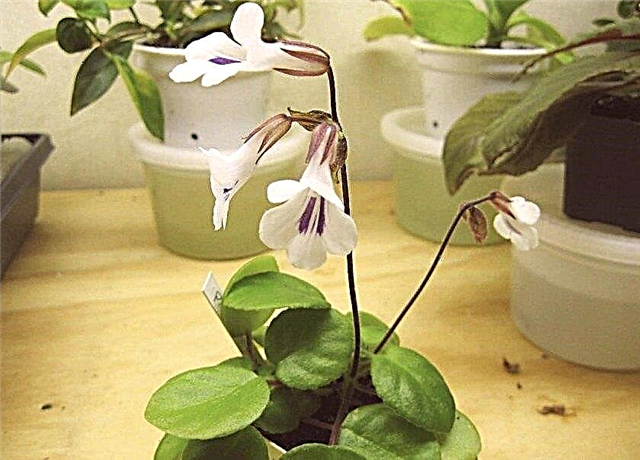 Unlike the care of many other flowering crops, hirita need not filter or defend water for irrigation, but in any case it is better to give preference to liquid at room temperature. The approximate irrigation regularity is 2-3 times a week in the summer and once every 1.5 weeks in the winter. However, at low temperatures in cold weather (about + 15 ° C), it is advisable to reduce the frequency of irrigation even more so as not to provoke stagnation of moisture in the soil.
Unlike the care of many other flowering crops, hirita need not filter or defend water for irrigation, but in any case it is better to give preference to liquid at room temperature. The approximate irrigation regularity is 2-3 times a week in the summer and once every 1.5 weeks in the winter. However, at low temperatures in cold weather (about + 15 ° C), it is advisable to reduce the frequency of irrigation even more so as not to provoke stagnation of moisture in the soil.
To moisten the soil in a pot with hirita, it is advisable to use only lower watering so that the liquid does not fall on the leaves: often this leads to spotting and decay of the leaf plates.
Top dressing
Primrose is fed in the spring and summer months, when it is most in need of nutrients. As suitable formulations, ready-made fertilizers can be used for indoor flowering plants with a high content of potassium and phosphorus (for example, "Stimovit" or "Master color"). After transplantation, the nutritional compositions are not used for 2 months, and at normal times they can be applied to the soil once every 2-3 weeks, previously dissolved in water.
Transfer
In most cases, a signal for transplanting to another pot is the limitation of space in the existing landing tank. On average, you need to change the pot once every two to three years, or if you recently purchased a flower, and it clearly lacks the nutrients in the shipping container. The new pot should be wide, but low, since the root system of the plant has the ability to grow in breadth, and not in depth. With determining the appropriate size, the outlet of the transplanted flower will help: it should protrude slightly beyond the edges of the selected container. The ideal time to complete the procedure is the end of March.
The new pot should be wide, but low, since the root system of the plant has the ability to grow in breadth, and not in depth. With determining the appropriate size, the outlet of the transplanted flower will help: it should protrude slightly beyond the edges of the selected container. The ideal time to complete the procedure is the end of March.
A mixture of leaf and turf soil, to which sand is added (approximate proportions 2: 1: 1/2), is well suited for the role of soil composition for primrose. You can also prepare land from 3 parts of turf soil, 2 parts of leaf, 1 part of humus and 1 part of sand. To increase the drainage properties of the soil, a little crushed activated carbon is added to it, but you still have to lay a layer of broken brick or expanded clay on the bottom of the flower pot. From ready-made soil mixtures, options for indoor violets are perfect.
The transplant process is simple and involves the implementation of standard actions:
- Put the drainage layer and pour disinfected soil into the prepared pot, filling it no more than 1/3 of the volume.
- Carefully remove the primula from the old pot, shake off the soil a little, and if necessary remove rotten places.
- Together with the remaining earthen lump, put the plant in a new pot and cover it with earth.
- Pour the hirita and take it to a warm place for further adaptation.
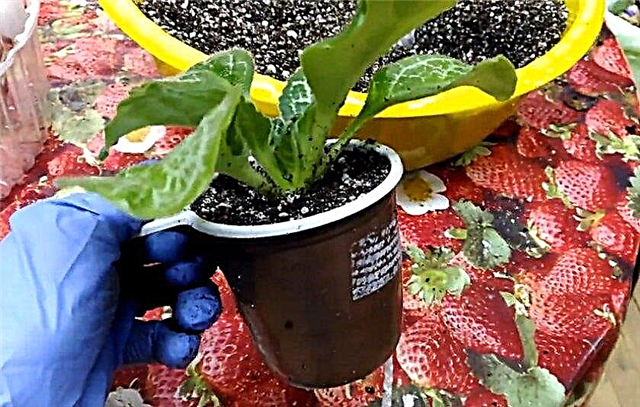 Under suitable growing conditions, primulin will quickly take root in a new place, without ceasing to bloom.
Under suitable growing conditions, primulin will quickly take root in a new place, without ceasing to bloom.Important! Immediately after transplanting watering not should be plentiful, and it is better to apply the liquid in small portions throughout the day. The fact is that in a new place, the roots do not immediately begin to fulfill their functions in full, therefore, when overflowing, it is very possible to rot the root system.
How to propagate
In the presence of an adult and healthy plant, hirits, the most suitable option for propagating a flower is the rooting of cut leaves. However, if you do not have a donor plant, then only sowing seeds purchased in a flower shop will help in this matter. Consider the features of each method.
Leaf
For propagation by cuttings in the case under consideration, healthy leaflets from the middle row are well suited, without visible spots or any other defects. For their cutting, it is desirable to use a sharp and pre-sanitized blade, with which the sheet is separated from the outlet. Further actions to root the cuttings are performed in the following sequence:
Further actions to root the cuttings are performed in the following sequence:
- Slightly dried slice cuttings handle fungicide.
- Prepare a small container and fill it with a suitable substrate.
- Deepen the stalk into the ground by about 1 cm.
- Sprinkle the soil with warm water.
- Cover the seedling with plastic wrap and take it to a warm place for rooting.
For the propagation of primula, a part of the leaf may also work, even if it is a small piece. To achieve the desired result, the cut material is turned upside down and small strips 5 cm long are cut using a blade (always perpendicular to the midrib). It is they who are used for further rooting. However, this method does not always give a positive result, so it is better to root the whole sheet.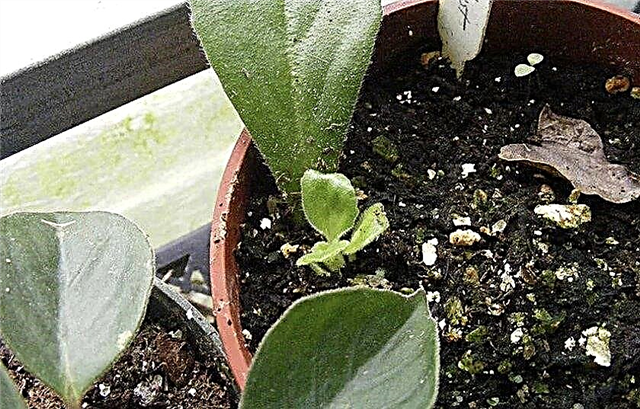
Seeds
The seed method is great for annual chirits, which grow and develop faster than perennials. Sowing material of the desired variety is easy to find in flower shops, and at home you only need to soak it in a weak solution of potassium permanganate for disinfection and sow it in a moist substrate in late February or early March.
Containers with seedlings must be covered with glass or a film stretched, after which they are moved to a warm room with a constant air temperature in the range + 24 ... + 26 ° C. Usually, when all the requirements are met and the soil substrate is regularly moistened, the first seedlings appear 12-14 days after sowing, but if the germination temperature is lower, then the process will stretch for a month or even more.Important! Hirita seeds do not need to be embedded in the ground or sprinkled. For germination, surface placement is sufficient for them.
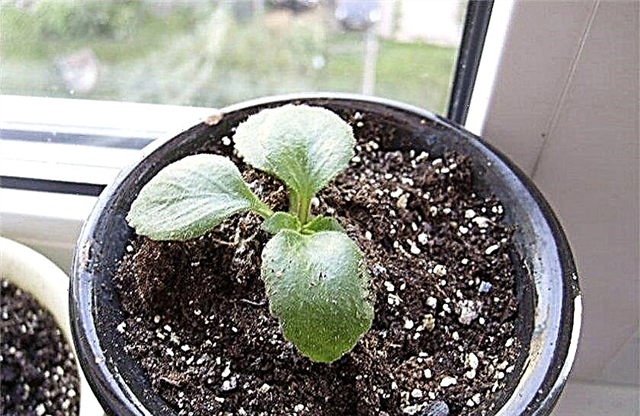 In winter, the appeared entrances are illuminated artificially (the total duration of daylight should not be less than 12 hours), and watering is performed using a syringe or syringe, which helps to avoid the effect of moisture on the tender grown leaves. After the appearance of the first true leaves, seedlings can be planted in separate containers, trying not to break the fragile stems. If this happens, then it is better to remove the broken leaf, and sprinkle the place of breakage with powder of crushed charcoal or activated carbon.
In winter, the appeared entrances are illuminated artificially (the total duration of daylight should not be less than 12 hours), and watering is performed using a syringe or syringe, which helps to avoid the effect of moisture on the tender grown leaves. After the appearance of the first true leaves, seedlings can be planted in separate containers, trying not to break the fragile stems. If this happens, then it is better to remove the broken leaf, and sprinkle the place of breakage with powder of crushed charcoal or activated carbon.Growing problems
Almost all problems in indoor floriculture are associated with violations of the requirements for the process of caring for plants: they are the cause of yellowing of the leaves, lack of flowering and the development of diseases. Next, we consider the possible difficulties in growing hirits and how to solve them.
Why does not bloom
There are many reasons for the violation of primrose blooming, but first of all it is worth making sure that the following factors are absent:
- dry air
- heat;
- freezing of the root system (especially in heat-loving species);
- excessive amounts of salts in the soil.
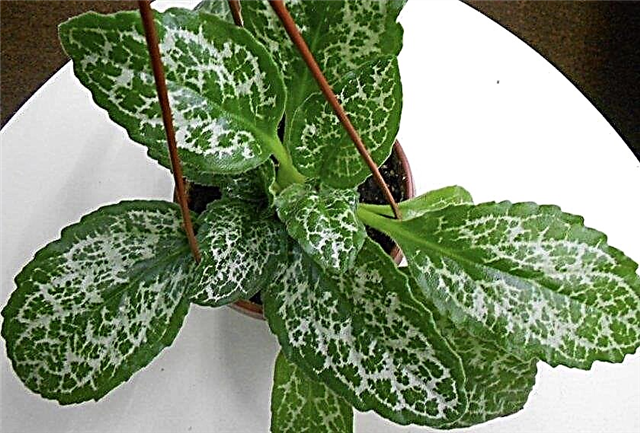 In addition, the lack of flowering of hirita is often associated with a limited amount of nutrients in the soil, so it is worth revising the feeding plan. Also, do not forget about the optimal flowering time, because its absence may well be due to the inappropriate season (primroses only appear with the arrival of spring and steady heat).
In addition, the lack of flowering of hirita is often associated with a limited amount of nutrients in the soil, so it is worth revising the feeding plan. Also, do not forget about the optimal flowering time, because its absence may well be due to the inappropriate season (primroses only appear with the arrival of spring and steady heat).After making sure that all conditions are met, just take the pot with the plant to a warm, well-lit ambient light and leave it there for further observation.
Diseases and Pests
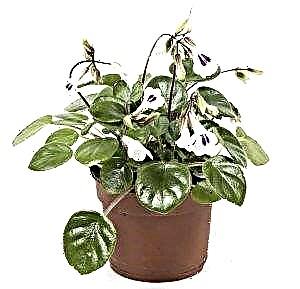 Most often, when growing hirits, flower growers have to deal with gray rot, mealybugs, scale insects, spider mites and thrips, which will help get rid of special fungicidal and insecticidal drugs. The first include such compounds as Fundazole, Fitosporin-M, Gamair, vitriol and Bordeaux.
Most often, when growing hirits, flower growers have to deal with gray rot, mealybugs, scale insects, spider mites and thrips, which will help get rid of special fungicidal and insecticidal drugs. The first include such compounds as Fundazole, Fitosporin-M, Gamair, vitriol and Bordeaux.
Among the effective insecticides, Actellik, Aktara, Fitoverm, and Haupsin deserve due attention. The dosage and method of use of each of them is always indicated on the package, and if the norms for hirita are not indicated, then you can focus on the values for indoor violets.
In general, primulin is a beautiful plant, even a novice gardener can cope with the cultivation of it. Having created all the necessary conditions for the growth and development of a flower, you will only have to follow its condition and admire the beautiful flowering.








